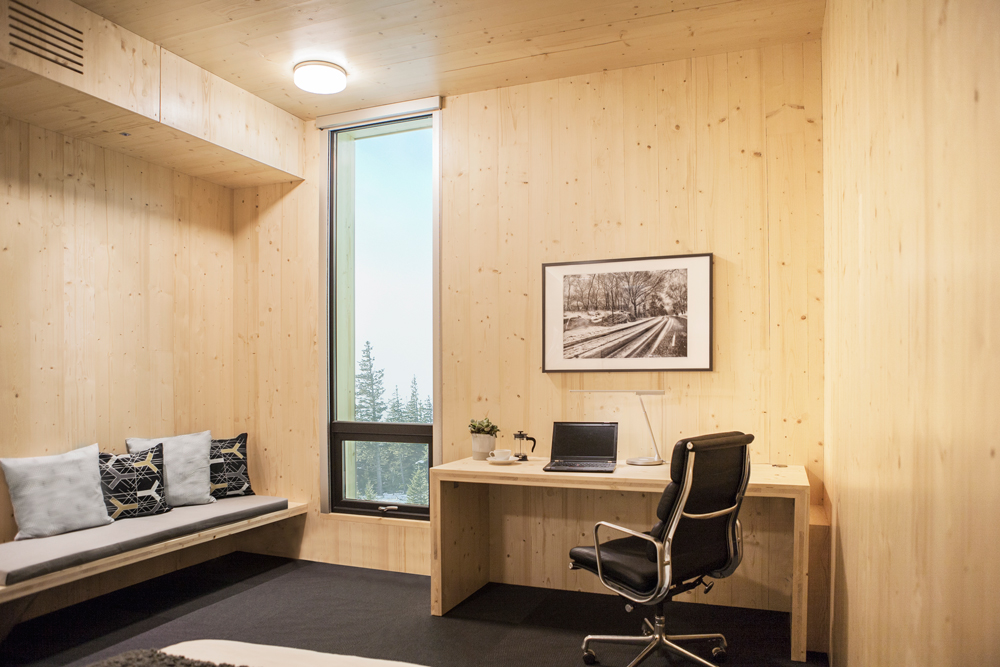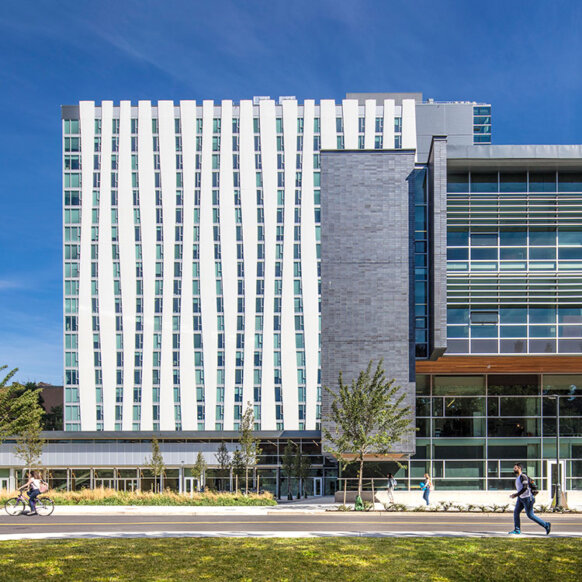A wood modular housing prototype designed by global architecture and design firm Perkins&Will is now helping to advance academic research at the University of British Columbia (UBC). Originally developed for Nexen CNOOC Limiteds Remote Workforce Accommodation project in Dilly Creek, British Columbia, the 312-square-foot cross-laminated timber (CLT) module is designed to be highly energy efficient, durable, and constructed with minimal wasteoffering advancements in both prefabrication and livability. The replicated module is part of one of the largest proposed CLT structures at 646,000-square-feet.
The module was designed to address the construction challenges inherent in the Workforce Accommodation projects remote location and harsh weather conditions, says Susan Gushe, managing director at Perkins&Wills Vancouver office. By providing a unique off-site prefabricated and modular solution, we were able to ensure that a high quality, healthy, and durable building was constructed efficiently while further reducing labour inputs.
The prototype was built to test the process of using CLT within a factory setting, confirm durability of transport, and ensure an efficient project delivery. Nexen supplied the prototype to UBCs Timber Engineering and Applied Mechanics lab who will conduct further research and investigate themes including structural integrity, prefabrication, hybrid high-rise buildings, floor vibration, soundproofing, long-term heat and moisture movement through CLT panels, and transportation of modules.
We look forward to the opportunity to study the prototype and test its prefabricated construction using CLT panels, says Frank Lam, senior chair professor of wood building design and construction research at UBC. We are very interested in innovative applications of wood in construction, particularly as interest in prefabrication with CLT is growing in Canada.
UBC will host the prototype for one year providing the opportunity to see first-hand the possibilities of prefabricated modular design, and how CLT can be a practical and appealing material for construction. Off-site prefabrication and modularization is an approach to construction that offers many benefits, such as an accelerated schedule, increased quality control, and cost savings, as well as reduction in waste and site disturbance.
With livability in mind, the module improves upon the aesthetic, materials, acoustics, and thermal performance of Nexens current conventional housing camps, and uses Passive House principles to achieve a robust building envelope. The module will have a 50-year life span and require minimal maintenance, as opposed to the predominant approach that requires replacement every ten to fifteen years.
We wanted this project to set an example of an accommodation that is not only appealing to the remote projects workforce, but also energy efficient, healthy, and durable, says Mark Topolnyski, Nexens senior project manager. Perkins&Wills innovation and design work on the module and the overall accommodation project surpassed our expectations.
Perkins&Wills Vancouver office has a long history of wood innovation. The offices expertise in prefabricated and modular construction has evolved and been refined over the past 20 yearsachieving both aesthetically beautiful design while meeting pragmatic requirements. This approach has benefited several project types, including multi-family residential, transit stations, commercial buildings, and schools.
Recent projects that have used the prefabricated and modular approach include UBCs Orchard Commons mixed-use student residence, two Evergreen Line stations, and Peregrine House School Childrens Pavilion in Langley, British Columbiathe first school of its kind in the nation. (The school was inspired by Perkins&Wills acclaimed Sprout Space, a revolutionary modular classroom facility that uses cutting-edge green building strategies.) Currently under design is a prefabricated landmark Pavilion that will be located at the entrance to the Great Northern Way campus in Vancouver.
A equipe do projeto também incluiu as estruturas ATCO & Logística, AHC + Derix, construção de aves, Equilibrium Consulting, grupo AME, AES Engineering, CFT Engineering, RWDI Consulting Engineers e Altus Group.
Para obter mais informações, entre em contato com [email protected].

